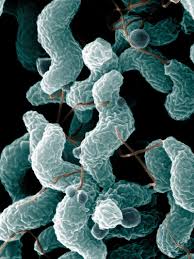Understanding Campylobacter Jejuni: A Common Foodborne Pathogen

Introduction
Campylobacter jejuni is a significant bacterial pathogen that poses a serious risk to public health. It is well-documented as one of the primary causes of bacterial gastroenteritis worldwide. With its prevalence in raw poultry, unpasteurized milk, and contaminated water, understanding Campylobacter jejuni is crucial for both healthcare professionals and consumers alike. In recent years, there have been increasing reports of Campylobacter infections, highlighting the need for effective prevention strategies.
The Pathogen and Its Impact
Campylobacter jejuni is a curved or spiral-shaped bacterium that can be found in the intestines of various animals, particularly birds. Symptoms of infection usually include diarrhea (often bloody), fever, abdominal pain, and nausea, which can lead to severe complications, particularly in vulnerable populations such as children and the elderly. According to the World Health Organization (WHO), Campylobacter is responsible for an estimated 3 million cases of foodborne illness annually. In India, the increasing consumption of poultry without adequate cooking measures has raised red flags regarding public health safety.
Recent Developments
In 2023, there were notable reports from various regions about spikes in Campylobacter infections. Public health departments in several states initiated investigations following clusters of gastroenteritis linked to contaminated foods. Safe food handling practices were highlighted as essential in these interventions. Health officials recommend thorough cooking of poultry to an internal temperature of at least 75°C (165°F) to effectively eliminate the bacterium.
Prevention Strategies
Prevention of Campylobacter jejuni infection hinges on proper food safety practices. These steps include:
- Cooking: Always cook meat, especially poultry, to the recommended internal temperatures.
- Hygiene: Wash hands thoroughly with soap and water before handling food, and after contact with animals.
- Separation: Avoid cross-contamination by using separate cutting boards for raw meats and ready-to-eat foods.
- Avoid Raw Milk: Do not consume unpasteurized milk or dairy products.
Conclusion
With the increasing number of Campylobacter jejuni cases, it is imperative that consumers and food handlers adopt stringent hygiene and cooking practices to minimize risks. Education and awareness play crucial roles in preventing these infections. As health authorities continue to monitor and address this issue, it is essential for individuals to remain informed and proactive in protecting their health. The significance of understanding Campylobacter jejuni goes beyond mere recognition; it embodies a commitment to safe food practices that can save lives.








